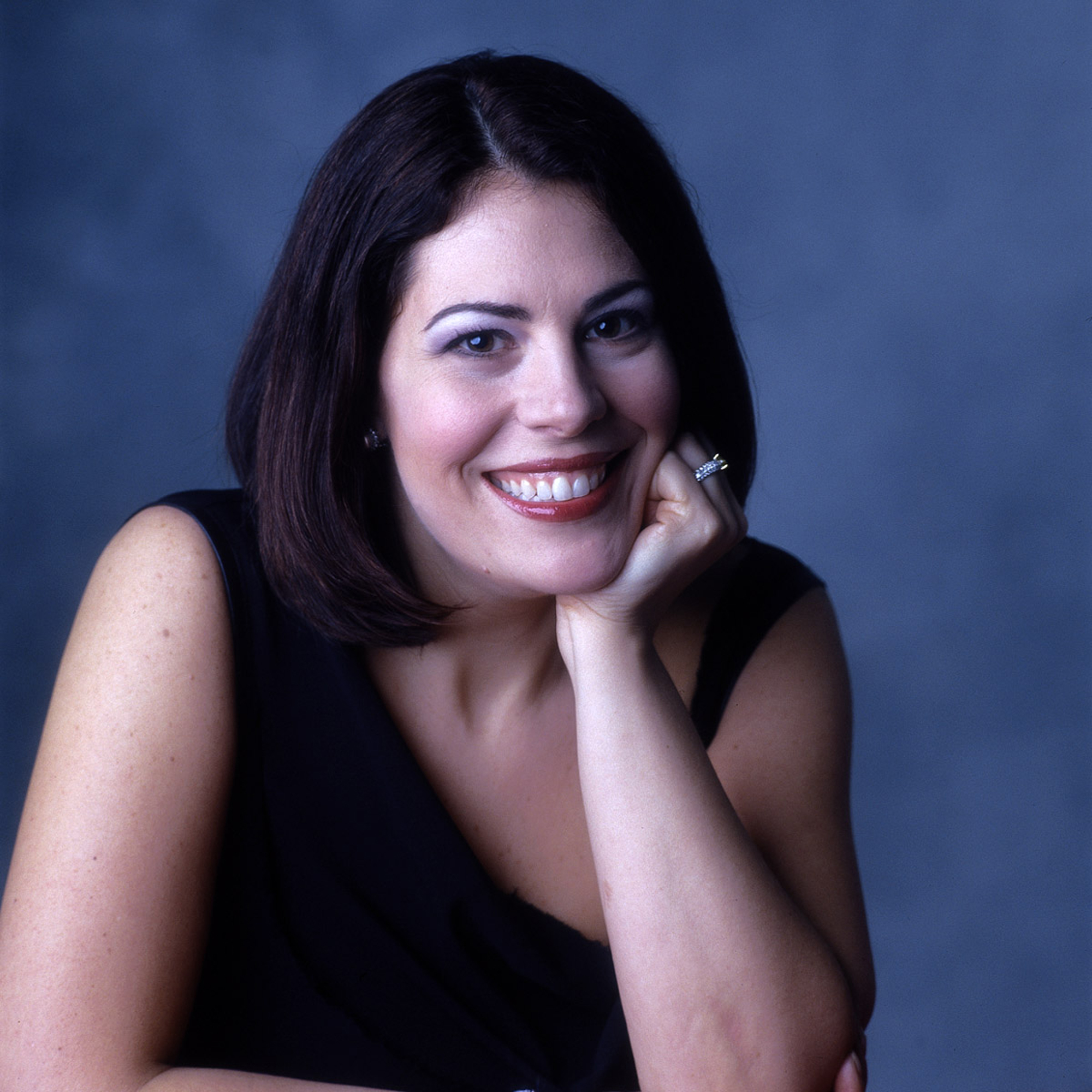Injured by offstage mugger and onstage tenor, Sondra Radvanovsky perseveres to sing in Lyric Opera’s “Ernani”

If Sondra Radvanovsky ever wanted to pull a demanding diva act, now would be the time.
The American soprano, in town to sing Elvira in Lyric Opera of Chicago’s new production of Verdi’s Ernani (opening Tuesday night) is trundling around with a five-pound cast on one leg and a broken toe on the other. The cast is for a ligament torn after struggling with a purse snatcher in San Francisco Oct. 3.
The broken toe occurred three days later onstage at the San Francisco Opera where she was singing Leonora in Verdi’s Il Trovatore. (Lyric saw her Leonora in the same production in 2006-07.) It was the final performance of the run. As Manrico fell to his knees near the fair Leonora, tenor Marco Berti landed on Radvanovsky’s foot, breaking the little toe on her left foot.
But less than two weeks later, there was Radvanovsky, in Chicago, rehearsing Ernani on the Civic Opera House’s steeply raked stage. Director Jose Maria Condemi was working out the Coronation Scene, in which Elvira pleads for the life of her beloved Ernani. Climbing the few stairs from her seat in the Opera House auditorium to the stage, the soprano moved gingerly, hanging onto the metal banister.
But once she was onstage, her injured toe and the bulky cast beneath her black slacks were barely evident. Radvanovsky moved smoothly across the stage and even knelt before the emperor without undue awkwardness. A gallant Ernani helped her to her feet, but certainly a lady of Elvira’s high breeding would never be allowed to rise from her knees unattended.
Offstage, the effort involved in rehearsing with two injured limbs was more evident.
“The stage is raked,” said Radvanovsky with a wince during an interview between rehearsals Sunday afternoon. “It pushes all the pressure onto the little toe. That’s what hurts the most.”
Perched on the piano bench in her dressing room, Radvanovsky was lunching on take-out soup. Her cast-covered leg was propped up in front of her.
“But I’m not complaining, I’m not complaining,” she added, in a joking, girlish chirp.
“She’s a very generous performer,” said Condemi, who is working with Radvanovsky for the first time. “It’s almost as if she had no injuries at all. There’s really been no need to change anything for her.”
She has asked, he said, for an occasional extra rehearsal break. Like most singers, Radvanovsky is taking only very mild medication for pain because stronger medicine can affect the voice.
“But with a performer like her who understands the role so well,” said Condemi, “she could sit in a wheel chair” and still be compelling.
Radvanovsky sounded only faintly weary describing her recent misadventures in San Francisco
“I was in Walgreen’s picking up a prescription,” she said. “A guy was following me around the store. When I walked out, he grabbed my purse, and I turned around and kicked him. He pushed me down, so I sprained my ankle.
“The next day I had a matinee, and as I was running off stage, I heard it crack. I went to the orthopedic surgeon, and he said, “Yep, you tore a ligament.”
Two days later at the final Trovatore performance, a bit of changed staging led Berti to fall on her foot. (He will be at Lyric later this season to sing Cavaradossi in Tosca.)
“He’s such a lovely, sweet man,” said Radvanovsky with a rueful smile. “He was so kind—helping me on stage, carrying me in places, helping me up and down. We changed the staging a little bit. I was kneeling, and he fell to his knees, like “Why, God?’ Right on my foot, in the last five minutes of the opera.”
Torn ligaments and broken toes pale compared with a health problem that Radvanovsky struggled with several years ago. Speaking publicly about the subject for the first time, she revealed that she had surgery on her vocal cords in 2002.
“When I was a newborn, I had pneumonia,” she said. Doctors put a tube into her throat while treating the pneumonia, and the soprano’s vocal doctors think they may have nicked a vocal cord. “I learned to sing all of my life with a node on one of my vocal cords.”
She first discovered the problem in college.
“It explained a lot,” said Radvanovsky, “because I knew I would get vocally tired. It wasn’t that I was pushing or singing the wrong repertoire; it was just [that I had] an impediment.”
Radvanovsky’s voice is strong with a lustrous, velvety finish, and she has become one of the world’s most acclaimed Verdi sopranos. But years of singing with an impaired vocal cord began to take their toll about a decade ago.
“I needed two days between performances for sure,” she said. “I couldn’t go out after performances and talk with friends because I would lose my voice. I was taking steroids to reduce the swelling, and I have a family history of heart disease.”
Even though, her husband had just quit his job to help manage her career and she would have to cancel some performances, she decided to have surgery in February 2002.
“I said, ‘You know what? It’s time. I can’t continue having a career like this.’ ”
She was risking a lot. Born in Chicago (her brother and mother still live in the area), Radvanovsky has been singing since her family moved to Richmond, Ind. when she was 11. She studied at the University of Southern California and spent three years in the Metropolitan Opera’s prestigious Lindemann Young Artist Development Program. Her career took off, and she began getting offers from the world’s leading opera houses.
To her Boston-based surgeon, the fact that she had managed to sing at all, never mind building a blossoming opera career, was astounding.
“I was written up in all these medical journals,” said Radvanovsky, “because he had never seen anybody learn how to sing with a node on one of their vocal cords. It was amazing how I could isolate my vocal cords and how they learned to function on their own, with the impediment. Afterward, of course, I had to relearn how to sing.”
She may have been a promising young soprano with a career on the line, but Radvanovsky’s doctors all but guaranteed a complete recovery. They were right.
“It wasn’t long at all,” she said. “Two months later I was singing my very first Vespri Siciliani in French at the Bastille. I could finally use my full voice.”
Radvanovsky hasn’t revealed her surgery until now because she felt that the opera world stigmatizes singers who choose that route. The implication, she said, is that their technique is somehow faulty and the injuries self-induced. But with such stars as soprano Natalie Dessay and tenor Rolando Villazon talking opening about their health issues, she decided to go on the record with hers.
It doesn’t hurt that, having turned 40 this year, Radvanovsky thinks she is singing even better than before. In February she heads to Paris for Verdi’s Don Carlo at the Bastille, She will sing Tosca for the first time, with Opera Colorado, in April and May, and she has two Verdi Requiems later this spring.
She has two recordings coming out, and her debuts in the leading roles of Verdi’s Un ballo in maschera and Aida are on her calendar but not yet announced. Radvanovsky feels that her voice is moving into somewhat lighter territory, and she will be learning the music for all three Donizetti queens—Anna Bolena, Maria Stuarda and Elizabeth I—for performances in the coming seasons.
“I feel like I’m really now coming into the meatiest point in my career,” she said. “It’s taken me a good four or five years to learn all aspects of my voice. Now I feel like I’m driving a Rolls Royce instead of some little Volkswagen.”
Sondra Radvanovsky stars with Salvatore Licitra in the Lyric Opera of Chicago’s production of Verdi’s Ernani, which opens Tuesday and runs through Nov. 23. www.lyricopera.org; 312-332-2244.
Posted in Articles




